Napalm - a weapon as effective as it is cruel - has become one of the most recognizable symbols of the Vietnam War. Its history, however, goes much deeper, to the time of the Second World War. It was then that the mixture of fuel, aluminum and gelling agent first revealed its sinister side.
“I love the smell of napalm in the morning. Once, our people bombarded one hill for twelve hours. When it was over, we didn't find a single dead body. That smell:like gasoline. The whole hill smelled like victory. This famous quote from the cult movie "Apocalypse Now" by F.F. Coppola captures the lethal power of napalm. It is ironic that the moral dilemmas of its inventor contributed to its creation.
Anonymous research project 4
The creator of this formidable substance was prof. Louis F. Fieser. This outstanding chemist from Harvard University, the creator of the methods of synthesizing vitamin K and cortisone, worked in the early 1940s with combat gases. The idea of using poisonous gas as a weapon aroused his reluctance , so he decided to convince his superiors that it would be more useful to research his old idea, i.e. incendiary bombs filled with condensed gasoline.
The idea found fertile ground, the "Anonymous Research Project No. 4" was established and the works started in full swing. Initially, Fieser added strips of natural rubber to the gasoline, thanks to which the explosion spread pieces of burning rubber around . The first attempts were not very impressive, but a test series of bombs was soon produced, sent immediately to the Philippines.
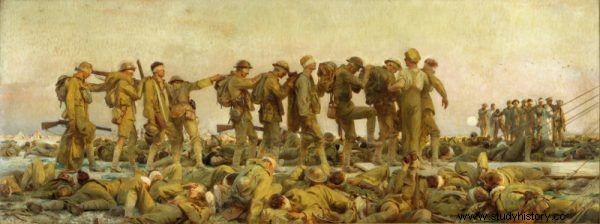
Combat gas victims on the canvas of John Singer Sargent. Have such images inspired the creation of napalm? (public domain).
Necessity is the mother of invention
The further fate of the research was influenced by events thousands of kilometers from the safe Harvard. On December 7, 1941, the Japanese attacked Pearl Harbor, and a few days later the test bomb ship was torpedoed and sank. Moreover, at the beginning of 1942, almost all rubber plantations were in the hands of the Japanese.
Fieser was faced with the need to find an accessible and cheap substance that could replace rubber. After checking many different ingredients, he finally found a combination of two aluminum soaps - naphthalene and palmitic. He named the mixture "napalm" from the first syllables of their names.
Napalm was in the form of a powder which, when mixed with gasoline, turned it into a gelatinous, sticky substance. It burned at about 1000 ° C and stuck to everything it fell on:metal, wood or human flesh. It was cheap and simple to produce, and its mixtures were even easier to prepare and resistant to external factors.
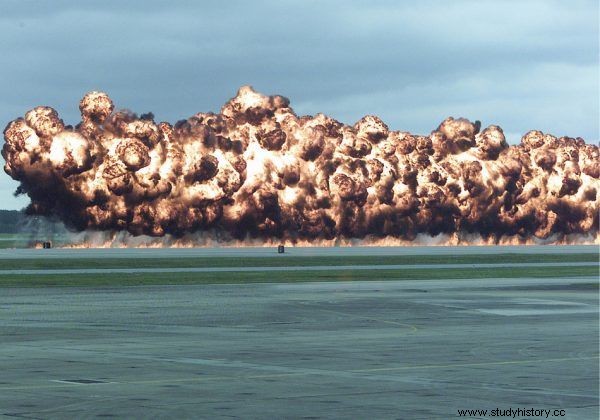
Modern simulation of an aerial napalm attack. In 1942, its destructive power was not yet so obvious (photo:Andrew Pendracki, United States Marine Corps, public domain).
On American Independence Day, July 4, 1942, the first napalm bomb was detonated in a small pond on Harvard campus. A weapon was born that was expected to kill many times more people than atomic charges. And at a fraction of the cost of the latter.
Baptism of fire
Although napalm was developed as a payload for aerial bombs, this was the first time it was used in flamethrowers. This weapon, known since antiquity, reminded of its sinister possibilities during World War I positional fights.
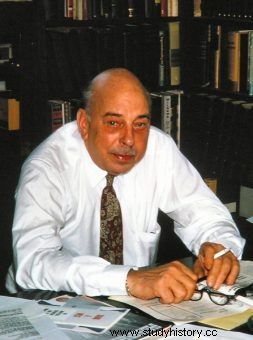
Louis Frederick Fieser in 1965 (photo:Peter Geymayer, public domain)
Of course, she also had disadvantages. The most serious were the short range and very short duration of action. Most of the gasoline burned out in flight, and the rest burned up in seconds when it reached its destination. Attempts have been made to slow down the process by adding diesel or other substances to the fuel, but the effects have been poor.
Until the appearance of napalm. It turned out that a few percent napalm mixture increases the effective range of the throwers up to four times. In addition, it stuck to the targets and burned for some more time, which increased damage to items and damage to people. The psychological impact of the blasters - already quite a lot - increased even more.
The first blasters adapted to the new fuel - the American M1A1 - appeared in the Pacific in 1943, wreaking havoc on the Japanese and tropical vegetation. Meanwhile, Fieser's team was perfecting the mixtures that were to become the standard fillings for incendiary bombs in the planned raids on Germany and Japan. Even special models of typical German and Japanese houses were built to test different types of mixtures on them.
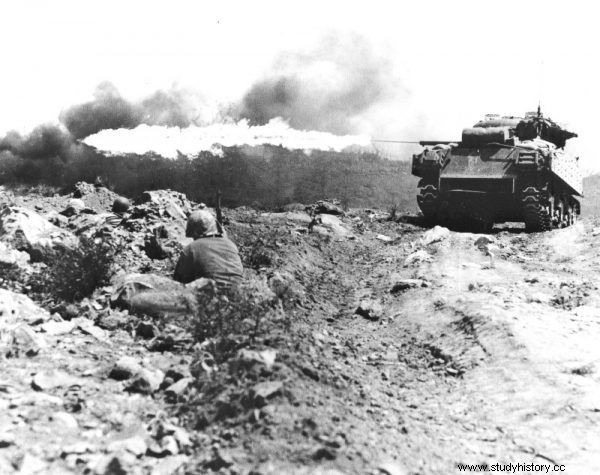
An American tank armed with a flamethrower attacks the Japanese fortifications on Iwo Jima (photo:Mark Kauffman, U.S. Marine Corps, public domain).
Disappointing debut
The advent of the M47 and M69 bombs made napalm production a profitable business that was practically monopolized by Standard Oil. Permanente Metal Corporation (PMC) was one of the suppliers of old-type incendiary charges that nearly collapsed due to the appearance of the new substance. However, its research department quickly developed a recipe for PT-1 pyrogel.
The traditional napalm has also been supplemented with an oxidizer, powdered aluminum and PMC's flagship product - magnesium. This blend reached a combustion temperature of 1600 ° C without losing any of the viscosity of Fieser's invention.
The Standard Oil and PMC factories were therefore working at full capacity, delivering hundreds of thousands or even millions of bombs that were soon to fall on enemy targets:tanks, factories, but also ordinary houses.
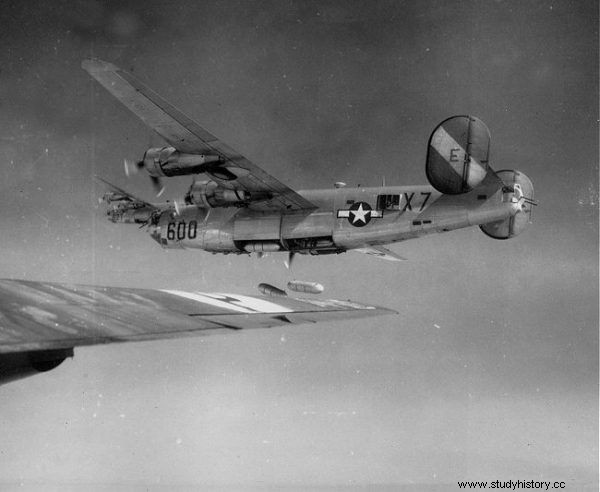
B-24 Liberator drops napalm bombs on German fortifications near the port of Bordeaux, 1945 (Photo:U.S. Air Force, public domain).
The first bombardment with napalm, or more specifically PT-1 pyrogel, took place on March 6, 1944, when the US 8th Air Force first attacked Berlin by day. Of the 814 flying fortresses and liberators, some carried AN-M76 bombs filled with incendiary substance.
The raid was rather remembered for the heavy losses of the Americans, and the new bomb was disappointing. Large amounts of the AN-M76 were returned to the ammunition depots, where they would probably have remained until the end of the war, had the British underestimated their advantages.
A story of revenge
On July 14, 1944, at 9 p.m., 14 Mosquito light bombers from RAF 140 wings took off from RAF Thorney Island, heading for the French coast. Most of the machines carried ordinary demolition bombs, but six of them carried the American AN-M76 filled with pyrogel.
The purpose of the formation was the barracks of the 17th SS Panzer Grenadier Division and the Château de Marieville, where the officers lived.
It was not an ordinary mission, but a deliberate retaliation planned with murderous precision. A few days earlier, disturbing news reached Special Air Service (SAS) headquarters. One of the commando groups carrying out subversive tasks in the enemy's hinterland was surprised by the troops of the 17th SS Division.
Some of the soldiers managed to escape, but 34 SAS soldiers, four French partisans and an American pilot were taken prisoner. The commander of the captured group, Lt. Tomos Stephens, was bludgeoned to death with a rifle butt, according to witnesses. The fate of the prisoners was unknown, but the worst was to be expected.
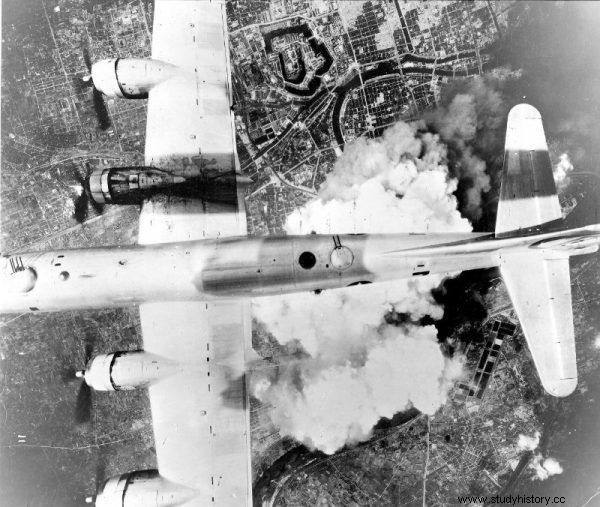
Boeing B-29A-45-BN Superfortress during the bombing of Osaka with incendiary bombs, June 1, 1945 (Photo:U.S. Air Force, public domain).
The bombers were overhead at exactly supper time. First, the demolition bombs "opened" the buildings, then came the incendiary charges. The castle and all the barracks were hit and all hell broke loose. The pyrogel stuck to everything so that it could not be removed. He burned uniforms and human muscles.
The machine gun fire and the demolition bombs dropped by the last four planes were almost an act of grace. Between 80 and 200 SS men were killed in the attack.
Lieutenant Stephens has been avenged. As it turned out later, not only him. A week before the RAF retaliatory raid, all prisoners were already dead. The wounded were killed with injections, the rest were shot.
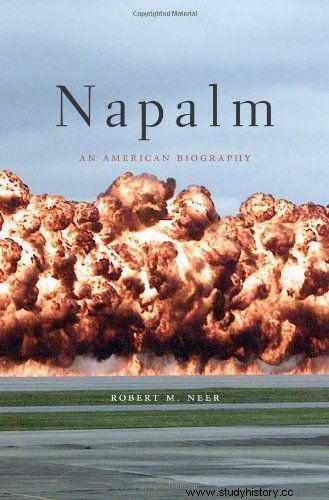
The article was based, inter alia, on on the book by Robert M. Neer, "Napalm:An American Biography", Belknap Press 2013.
Good intentions… bring hell to earth
Napalm and pyrogel were used on an increasing scale. They destroyed bunkers and tanks, and another precise attack by mosquitoes from 140 wings burned the Gestapo archive in The Hague at the cost of one death on the ground.
However, more and more often napalm bombs fell on residential areas in German and Japanese cities. They accounted for almost half of the incendiary loads dropped on Dresden. In just one raid on Tokyo, they killed more people than the atomic bombs dropped on Hiroshima and Nagasaki.
Twenty years later, Vietnam made napalm a symbol of the cruelty of war. Professor Fieser was haunted by the shadows of his invention until the end of his life. In 1980 napalm was banned against civilians. It is used against soldiers and partisans to this day.
Bibliography:
- Rober M. Neer, Napalm:An American Biography, Belknap Press, Harvard 2013.
- Paul McCue, SAS Operation Bulbasket. Behind the Lines in Occupied France ” , Pen &Sword Military, Barnsley 2009.
- Mark R. Wilson, Making “Goop” Out of Lemons:The Permanente Metals Corporation, Incendiary Bombs, and the Costs of Industrial Overexpansion during World War II , [in:] Rutgers School of Arts and Sciences. Department of Economics, [accessed March 22, 2015] .
